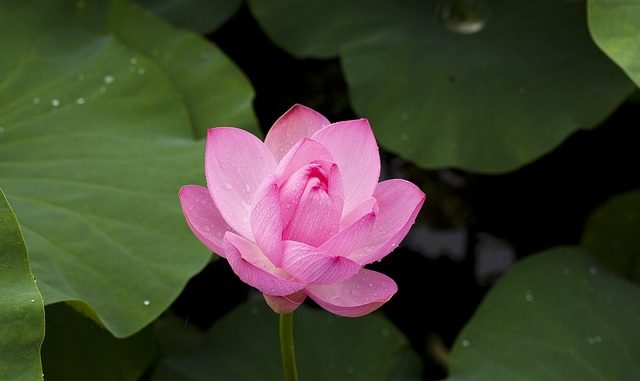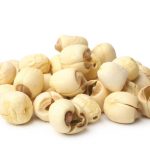
The Lotus plant is a flower which is also known as the Indian Lotus or the Sacred Lotus. The scientific name is (Nelumbo nucifera Gaertn). It is regularly used in Asian dishes and the flower in its own right is a horticultural wonder. It contains plenty of phenolic compounds.
The plant is used in Eastern medicine as an anti-diabetic and as an anti-depressant. At the moment there are no high quality human studies to examine fully the benefits of the plant.
Most of the research concerns extracts of the plant. The seeds too are a health food in China and India and is often found in confectionary (cakes and sweets) and in soups (Sridhar & Bhat, 2007; Zeng et al., 2012).
The green embryo in the center of the Lotus seed called the Lotus plumule is commonly consumed as an ingredient of tea in China. It is made up of 7.8% water, 4.2% ash, 12.5% crude oil, and 26.3% protein on a dry basis (Bi et al., 2006).
Neferine, a bisbenzylisoquinoline alkaloid, is extracted from Lotus plumule.
Studies show that neferine has a variety of biological activities which have all been conducted in animals. This includes antifibrosis of the liver (Chen et al., 2015), antioxidant, antiarrhythmic (Guo et al., 2002), antithrombotic, antihypertensive, and chemosensitive effects (Kadioglu et al., 2017).
References
Bi, Y., Yang, G., Li, H., Zhang, G., & Guo, Z. (2006). Characterization of the chemical composition of lotus plumule oil. Journal of Agricultural & Food Chemistry, 54(20), pp. 7672–7677.
Chen, M. S., Zhang, J. H., Wang, J. L., Gao, L., Chen, X. X., & Xiao, J. H. (2015). Anti‐fibrotic effects of neferine on carbon tetrachloride‐induced hepatic fibrosis in mice. American Journal of Chinese Medicine, 43(2), pp. 231–240.
Guo, Z., Li, Q., Cao, H., & Xu, Z. (2002). Antiarrhythmic efficacy of neferine assessed by programmed electrical stimulation in a canine model of electropharmacology. Journal of Chinese Pharmaceutical Sciences, 11(2), pp. 35–42.
Hu, J. (2012). Comparative analysis of genetic diversity in sacred lotus (Nelumbo nucifera gaertn.) using AFLP and SSR markers. Molecular Biology Reports, 39(4), pp. 3637–3647.
Kadioglu, O., Law, B. Y. K., Mok, S. W. F., Xu, S. W., Efferth, T., & Wong, V. K. W. (2017). Mode of action analyses of neferine, a bisbenzylisoquinoline alkaloid of lotus (Nelumbo nucifera) against multidrug‐resistant tumor cells. Frontiers in Pharmacology, 8, 238.
Sridhar, K. R., & Bhat, R. (2007). Lotus—A potential nutraceutical source. Journal of Agricultural Technology, 3(1), pp. 143–155.
Zeng, S. H., Chen, B. Y., Guo, Z. B., & Zheng, B. D. (2012). Advances in the bioactivity of Lotus‐seed. Chinese Journal of Tropical Crops, 33(11), pp. 2110–2114.

Leave a Reply